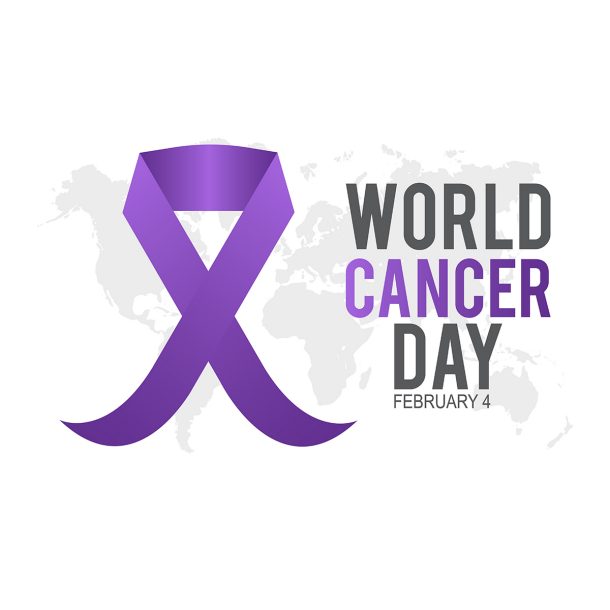-
Property & Casualty
Property & Casualty Overview

Property & Casualty
We offer a full range of reinsurance products and the expertise of our talented reinsurance team.
Expertise
Publication
High-Low Agreements Can Prevent Large Plaintiff Verdicts
Publication
Medical Marijuana and Workers’ Compensation
Publication
Secondary Peril Events Are Becoming “Primary.” How Should the Insurance Industry Respond?
Publication
Risks of Underinsurance in Property and Possible Regulation
Publication
Benefits of Generative Search: Unlocking Real-Time Knowledge Access
Publication
Battered Umbrella – A Market in Urgent Need of Fixing -
Life & Health
Life & Health Overview

Life & Health
We offer a full range of reinsurance products and the expertise of our talented reinsurance team.

Publication
Thinking Differently About Genetics and Insurance
Publication
Post-Acute Care: The Need for Integration
Publication
Trend Spotting on the Accelerated Underwriting Journey
Publication
Medicare Supplement Premium Rates – Looking to the Past and Planning for the Future U.S. Industry Events
U.S. Industry Events
Publication
The Future Impacts on Mortality [Video] -
Knowledge Center
Knowledge Center Overview

Knowledge Center
Our global experts share their insights on insurance industry topics.
Trending Topics -
About Us
About Us OverviewCorporate Information

Meet Gen Re
Gen Re delivers reinsurance solutions to the Life & Health and Property & Casualty insurance industries.
- Careers Careers
Cancer Pathology – Understanding the Pathology Report [Part 1 of 2-Part Series]

February 02, 2023
Jodie Sweetser
Region: North America
English
Français
Diagnosing and treating cancer is a complex process requiring the experience and skills of multiple medical and health professionals, often referred to as the oncology team (also known as a cancer care team or multidisciplinary care team). This blog reviews cancer risk factors, the five main types of cancer, and the screening tests used to diagnose cancer. But, in order for claims professionals to understand the diagnosis, they need to understand the significance of the pathology report. So, we’ll also look at the types of cancer staging and grading systems – and the importance of biomarker testing.
The Role of the Pathologist
The oncology team generally includes an oncologist, an oncology nurse, an oncology nurse practitioner, a patient navigator, an oncology social worker, a pharmacist, a genetic counselor, a registered dietician, a mental health professional, a spiritual support person and a pathologist. Pathologists are physicians who specialize in the diagnosis of diseases. They receive biopsy tissue samples and complete a macroscopic examination of a specimen by describing how the specimen looks to the naked eye based on color, size, extent and characteristics of the cancer. A histopathological (microscopic) examination of the tissue is performed to determine whether a tumor is present, if it is cancerous or noncancerous, the type of cancer (i.e., carcinoma, sarcoma, etc.), and the behavior of the tumor (i.e., well differentiated vs. poorly differentiated).
Biomarker testing allows the pathologist to provide a definitive diagnosis. After cancer is diagnosed, the pathologist determines the grade and stage of the cancer which helps with treatment planning and assessing the prognosis.
Definitive diagnoses has improved cancer prevention and education.
Understanding Cancer Risks
Knowing the causes of cancer provides basic insight for understanding prevention, early detection and cancer management; if a risk factor is known, it is easier to avoid.
- Risk factors that can be modified are often called lifestyle factors, and include smoking, excessive alcohol, poor diet, exposure to ultraviolet radiation (sun) and some viral infections, such as human papilloma virus (HPV).
- Risk factors that can’t be controlled include family history, age and genetic predisposition.
- Exposure to chemicals or hazardous substances can increase the risk of cancer. Some of the more well-known carcinogens are asbestos, nickel, cadmium, radon, vinyl chloride and benzene.
The risk of developing cancer depends on how much, how long, how often and when the exposure occurred.
Cancer Diagnosis
Signs and symptoms are ways the body lets you know that you have an injury, illness or disease. The signs and symptoms of cancer depend on where the cancer is located, how much it has grown, how much it has spread (metastasized) and how it affects nearby organs or tissues. Common signs and symptoms are fever, bleeding, fatigue, pain, swelling or lumps and weight loss.
Routine screening tests such as a mammogram, PAP smear or colonoscopy may detect breast, cervical or colorectal cancers (respectively) at an early stage before symptoms appear.
Lab tests or blood tests can play an important role in diagnosing leukemia or Hodgkin’s lymphoma. While blood tests alone can’t be used to diagnose most cancers, certain chemicals and proteins in the blood can help with diagnosis. Urine testing, urinalysis, can help detect the presence of certain cancers including bladder, kidney, prostate and cervical cancer.1
In general, diagnosing cancer usually starts with a physical exam. Additional testing is recommended if cancer is suspected. Diagnostic imaging such as computerized tomography (CT‑Scan), magnetic resonance imaging (MRI), bone scan, ultrasound (US) or positron emission tomography (PET) scans help to detect the location and size of a suspicious tumor.
A biopsy is the most effective way to diagnose cancer. A sample of the tumor is excised during surgery, by biopsy or by drawing a blood; the blood or tissue samples are then sent to the pathology department for testing.
Cancer Types
Cancers are classified according to the kind of fluid or tissue from which they originate, or according to the location in the body where they first developed.
Five Main Types of Cancer2
Carcinoma |
Affects organs and glands, such as the lungs, breasts, pancreas and skin. Carcinoma is the most common type of cancer. |
Sarcoma |
Affects soft or connective tissues, such as muscle, fat, bone, cartilage or blood vessels. Relatively uncommon. |
Melanoma |
Develops in the cells that pigment your skin. |
Lymphoma |
Affects your lymphocytes or white blood cells. |
Leukemia |
Affects blood – It does not usually form solid tumors. |
Source: https://my.clevelandclinic.org/health/diseases/12194-cancer |
|
Tumors can be benign (noncancerous) or malignant (cancerous). Benign tumors tend to grow slowly and do not spread. Malignant tumors can grow rapidly, invade and destroy nearby normal tissues, and spread throughout the body.
Pathology Tests, Cancer Stages and Grading
Biomarker Testing
Scientific advances have improved the pathologist’s ability to provide a definitive cancer diagnosis through the use of biomarker testing, also called molecular pathology.
Biomarker testing is used to target the genes that drive many forms of cancer. It is a way to look for genes, proteins, and other substances (called biomarkers or tumor markers) that can provide information about cancer. Each person’s cancer has a unique pattern of biomarkers. Some biomarkers affect how certain cancer treatments work. Biomarker testing may help in choosing a cancer treatment.3
Cancer Stages
Staging is the process whereby the pathologist determines how much cancer is in a person's body and how far is has spread from its origin. Cancer staging may include a Descriptive Staging system or a TNM system.
The Descriptive Staging system is more often used by cancer registries than by doctors. A patient may hear their doctor or nurse describe their cancer in one of the following ways:
Descriptive Staging System4
In situ |
Cancer has not spread to nearby tissue. |
Localized |
Cancer is found only in the organ where it started to grow. |
Regional |
Cancer has spread to the surrounding tissues or lymph nodes. |
Distant |
Cancer has spread to other organs and systems in the body. |
Unknown |
Not enough information to figure out the stage. |
Source: https://www.cancer.gov/about-cancer/diagnosis-staging/staging |
|
The TNM system is the most widely used cancer staging system. Most hospitals and medical centers use the TNM system as their main method for cancer reporting. You are likely to see cancer described by this staging system in the pathology report unless a different staging system is used for a specific type of cancer (such as brain and spinal cord tumors and blood cancers).
TNM Staging System
T (tumor) |
The size and extent of the main tumor. |
N (node) |
The number of nearby lymph nodes that have cancer. |
M (metastasis) |
Whether the cancer has metastasized, or spread, to other parts of the body. |
When cancer is described by the TNM system, there will be numbers after each letter that give more details about the cancer, for example T1N0MX or T3N1M0. The following explains what the letters and numbers mean.
Primary Tumor (T) |
Regional Lymph Nodes (N) |
Distant Metastasis (M) |
TX: Tumor cannot be measured. |
NX: Cancer in nearby lymph nodes cannot be measured. |
MX: Cannot be measured. |
T0: Cannot be found. |
N0: No cancer in nearby lymph nodes. |
M0: No spread to other parts of the body. |
T1, T2, T3, T4: Refers to the size and/or extent of the main tumor. The higher the number, the larger the tumor or the more it has grown into nearby tissues. |
N1, N2, N3: Refers to the number and location of lymph nodes that contain cancer. |
M1: Cancer has spread to other body parts. |
Ts may be further divided to provide more detail, such as T3a and T3b. |
The higher the number, the more lymph nodes that contain cancer. |
The M classification can be further subdivided based on the tumor. |
Source: https://www.cancer.gov/about-cancer/diagnosis-staging/staging |
||
The TNM staging is mainly used to describe cancers that form solid tumors, such as breast, colon and lung cancers. Doctors use other staging systems to classify other types of cancer, such as central nervous system tumors, childhood cancers and blood cancers.5
Cancer Grades
Tumor grade describes how normal or abnormal cancer cells look under a microscope. The more normal the cells look, the less aggressive the cancer and the more slowly it grows and spreads.
Systems for describing tumor grade can differ depending on the type of cancer, but most tumors are graded as X, 1, 2, 3 or 4.
Tumor Grades6 |
Tumor Description |
WHO Classification |
Grade X |
Grade cannot be assessed (undetermined) |
|
Grade 1 |
Well-differentiated (low grade) |
Slow growing, nonmalignant, associated with long-term survival |
Grade 2 |
Moderately differentiated (intermediate grade) |
Relatively slow growing, can recur as nonmalignant or malignant higher-grade tumors |
Grade 3 |
Poorly differentiated (high grade) |
Malignant and often recur as higher-grade tumors |
Grade 4 |
Undifferentiated (high grade) |
Reproduces rapidly and are very aggressive malignant tumors |
Source: https://www.cancer.gov/about-cancer/diagnosis-staging/diagnosis/tumor-grade# |
||
Example of a TNM Staged Diagnosis including Biomarkers7
*Invasive carcinoma left breast, Rt axillary disease Stage 1A, T1cN0M0, ER+ 90%, PR+ 2%, HER2 negative |
ER/PR+: Estrogen receptor/progesterone receptor – More likely to respond to hormone therapy |
HER2 negative: Human Epidermal Growth Factor Receptor – Cells tend to grow more slowly and are less likely to recur or spread. |
The oncology team would then review best treatment options taking into consideration the stage, grade, hormone receptors, node negative or positive and risk of recurrence.
WHO Grade Classification of Tumors
The World Health Organizations (WHO) classification of Central Nervous System (CNS) tumors is the most widely accepted system for classifying those types of tumors. A CNS tumor can be either cancerous (malignant) or benign, with both types being potentially dangerous.8
The WHO classification has long been based on histological findings supported by ancillary tissue-based tests. More recently, molecular biomarkers have gained importance in providing both ancillary and defining diagnostic information. Neoplasms are graded within-tumor-type to provide more flexibility in using a grade relative to the tumor type, to emphasize biological similarities within tumor types rather than approximate clinical behavior, and to conform with WHO grading in non-CNS tumor types. They also added a layered report structure combining a tissue-based histological diagnosis, CNS WHO grade and molecular information.
Traditionally, CNS tumor grading was based exclusively on histological features, but certain molecular markers provide important prognostic information. For this reason, molecular parameters have now been added as biomarkers of grading and for estimating prognosis within multiple tumor types.
Because of the growing importance of molecular information in CNS tumor classification, diagnoses and diagnostic reports need to combine different data types into a single, “integrated” diagnosis.9
Summary
Cancer is a complex disease. The pathology report is essential in providing a precise diagnosis. It facilitates optimal treatment, provides insight into the prognosis, and assists in predicting treatment response.
Becoming familiar with the grading, staging and biomarker terminology is key for Claims Assessors to accurately evaluate and manage cancer claims. Avoiding inaccurate assumptions about cancer, including ”cancer is almost always a death sentence,” while treating each claim individually, will help manage a claims duration.
In my next blog about Cancer Pathology, I’ll delve into treatment modalities and prognosis – along with considerations for the Claims Assessors. In the meantime, feel free to reach out to me with claims questions.
Endnotes
- https://www.cancercenter.com/diagnosing-cancer/lab-tests
- https://my.clevelandclinic.org/health/diseases/12194-cancer
- https://www.cancer.gov/about-cancer/diagnosis-staging/staging
- https://www.cancer.gov/about-cancer/diagnosis-staging/staging
- https://www.cancer.gov/about-cancer/diagnosis-staging/staging
- https://www.cancer.gov/about-cancer/diagnosis-staging/diagnosis/tumor-grade#
- https://www.ncbi.nlm.nih.gov/pmc/articles/PMC2705275/
- https://www.cancer.net/cancer-types/central-nervous-system-tumors-brain-and-spinal-cord-childhood/introduction#:~:text=A%20CNS%20tumor%20begins%20when, other%20parts%20of%20the%20body
- https://www.ncbi.nlm.nih.gov/pmc/articles/PMC8328013/




